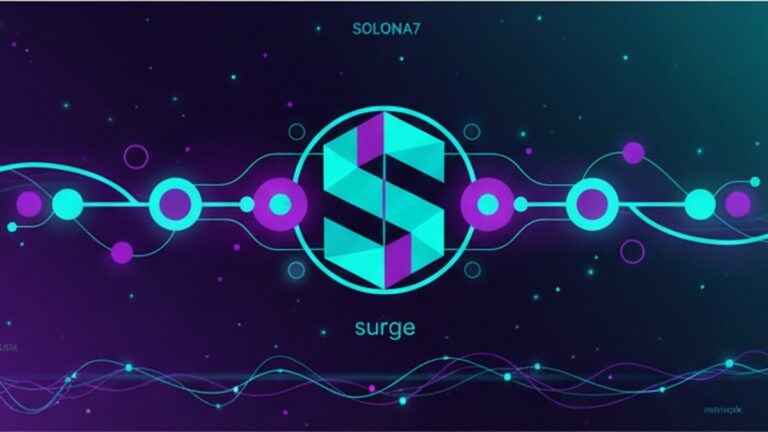In the dynamic world of cryptocurrency, where innovation meets regulation, the recent passing of the GENIUS Act appears to have ignited a stablecoin surge on the Solana blockchain, sparking discussions about its implications for Ethereum’s dominance. As stablecoin supply on Solana skyrockets, some experts are questioning if Ethereum is losing its edge in this rapidly evolving market.
Solana’s Surge Post-GENIUS Act
A Bitwise analyst recently highlighted that the stablecoin supply on Solana has increased by an impressive 40% since the GENIUS Act came into effect. This legislation, aimed at creating a more robust regulatory framework for digital currencies, seems to have provided the necessary clarity and confidence for investors and developers, catalyzing growth on Solana. The act’s provisions, which include clearer guidelines for issuers and stronger consumer protections, have been widely praised for fostering a more secure environment for stablecoin transactions.
Solana’s rapid growth isn’t just a matter of numbers. The blockchain’s unique architecture, which combines proof-of-stake (PoS) with proof-of-history (PoH), offers high-speed transactions and significantly lower costs compared to its competitors. This technical advantage has attracted a host of projects and investors looking for efficient and scalable solutions, further boosting its stablecoin ecosystem.
Ethereum’s Response
Ethereum, the long-standing leader in the decentralized finance (DeFi) space, isn’t sitting idly by. While Solana’s gains are noteworthy, Ethereum continues to be the bedrock of the stablecoin market, hosting giants like USDT and USDC. However, Ethereum’s network has been grappling with scalability issues and high gas fees, which have driven some projects to explore alternatives like Solana.
The Ethereum community is not ignoring these challenges. The much-anticipated Ethereum 2.0 upgrade promises to address these issues with a transition to a full PoS model, which is expected to enhance scalability and reduce costs. Yet, the rollout has faced delays, and the market’s patience is being tested as competitors like Solana capitalize on these shortcomings.
A Balanced Perspective
While it’s tempting to pit Solana against Ethereum in a zero-sum game, the reality is more nuanced. Each blockchain has its strengths, and the market is large enough to accommodate multiple winners. Solana’s rise is a testament to its innovative approach and the market’s appetite for alternatives to Ethereum. However, Ethereum’s established ecosystem, developer community, and network effects provide it with a solid foundation that is not easily eroded.
Moreover, the GENIUS Act’s impact is not limited to Solana. Other blockchains, including Tron, have also experienced growth in their stablecoin supply, albeit at a slower pace. This suggests that the act’s regulatory clarity is benefiting the entire crypto ecosystem, encouraging broader adoption and innovation across multiple platforms.
The Road Ahead
As the stablecoin market continues to expand, driven by regulatory developments and technological advancements, the competition between blockchains is likely to intensify. Investors and developers will keep a close eye on Ethereum’s response to the challenges posed by Solana and others. The success of Ethereum’s upgrades, alongside Solana’s ability to maintain its momentum, will be critical in shaping the future landscape of digital finance.
Ultimately, the GENIUS Act’s contribution to this stablecoin boom underscores the importance of regulatory frameworks that balance innovation with consumer protection. As the crypto industry matures, such measures will be crucial in sustaining growth and building trust among users.
In conclusion, while Solana’s recent gains are noteworthy and indicative of a shift in the market, Ethereum’s position remains strong, albeit challenged. The crypto world is ever-evolving, and adaptability will be key for both platforms as they strive to meet the demands of an increasingly sophisticated market. As regulatory clarity continues to improve, the true potential of stablecoins on blockchains like Solana and Ethereum is yet to be fully realized.

Steve Gregory is a lawyer in the United States who specializes in licensing for cryptocurrency companies and products. Steve began his career as an attorney in 2015 but made the switch to working in cryptocurrency full time shortly after joining the original team at Gemini Trust Company, an early cryptocurrency exchange based in New York City. Steve then joined CEX.io and was able to launch their regulated US-based cryptocurrency. Steve then went on to become the CEO at currency.com when he ran for four years and was able to lead currency.com to being fully acquired in 2025.


